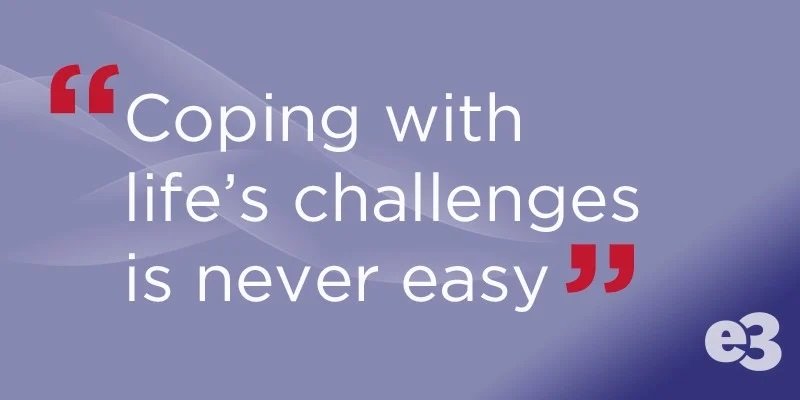Coping with life’s challenges is never easy, especially if they involve a physical limitation like losing one’s hearing. For many patients with hearing loss the reaction could be fear, as in wanting to escape the situation, or shame, as in wanting to hide from it.
As an audiologist or hearing aid dispenser, it will often fall upon you to help people deal with these hearing aid challenges and find a way around them. And while the bulk of your customer base will no doubt be seniors, a small percentage will likely be infants, who come with their own set of challenges.
Losing one’s hearing is difficult to deal with at any age. Knowing how to help these patients is critical and will ensure a smooth transition from pre-hearing aid life to post.
Hearing Aid Challenges for Mature Adults
A quiet, sedentary life for seniors is a thing of the past. Many are now engaging in more active pursuits like hiking, biking, golfing, and gardening. The trick for many is being able to balance hearing well with their active lifestyle.
While it can be frustrating, solutions do exist. Clips can help keep hearing aids in place during activity. Water-resistant models can allow people to pursue aquatic activities like paddling and fishing. Whatever the circumstance, there is usually a solution.
For seniors, learning how to use their new hearing aids is a common challenge. Audiologists can offset this problem by offering detailed, yet simple instructions in large-sized print. Listening to your patients concerns, thoroughly answering their questions, and scheduling regular follow-up visits will also ensure a smooth transition.
It’s also critical to educate these patients on how far hearing aid technology has come. Many people are unaware of the incredible things hearing aids can do, like improving speech in noise recognition, suppressing feedback, and helping better understand a speaker’s voice on the phone. The Oticon Opn, one of the most advanced hearing aids on the market, connects to smart phones, doorbells, kitchen appliances, and more to send audio notifications to the user’s ears.
Many older patients don’t get hearing aids for reasons of vanity or pride. For some seniors, just getting them to wear their hearing aids may prove more difficult than getting them to purchase them in the first place. Today, hearing aids come in several different styles, including behind-the-ear (BTE), mini-behind-the-ear (mBTE), completely-in-the-canal (CIC), in-the-canal (IIC), and traditional-in-the-ear (ITE). Most of these are designed to be inconspicuous. It’s important to communicate that to your patients so they know their personal appearance won’t be affected.
As an audiologist, there are a few things you can do to help these patients, such as:
- Making sure the fit is comfortable
- Avoiding being judgmental
- Being more understanding and compassionate
- Setting short-term goals for use
For seniors who have never worn hearing aids before, their expectations could be unrealistic, which is why it’s important to not exaggerate the benefits, and always be as forthright and honest as possible.

Hearing Aid Challenges for Infants
Infants and hearing aids are a pairing that come with numerous challenges, the biggest of which may be the lack of verbal feedback. Is the hearing aid working? Is it too loud? Too quiet? You won’t be able to ask the infant these questions, which is why monitoring them is so instrumental.
It’s important to look for clues – crying, jumping around, a lack of responsiveness. You also need to work with the parents and let them also know what behaviors to look for.
Getting senior patients to keep their hearing aids in is usually an issue of pride. With infants, it’s an entirely different story. Because of all their climbing around and jostling about, plus the likelihood of them physically removing their hearing aids at every opportunity, diligence on the part of the parents is required.
Infants are in a state of rapid growth, which means their ears are, too. Keeping the molds properly sized to fit their ears will help keep them from falling out, and more importantly help limit the amount of feedback that occurs when hearing aids are too small.
While waiting for new, larger ear molds, something as simple as a headband can hold the old mold in place, while also reducing feedback, until the new one is ready.
Getting infants to keep their hearing aids in is an obvious problem. However, you may encounter some who don’t want to take them out, even at bedtime. Getting parents to establish nighttime routines can usually offset this problem.
There’s a big difference between water-resistant and waterproof, and getting seniors to understand this is pretty easy. But with infants, it’s the parents that will have to understand this difference.
The key word for parents to remember is “immersion.” Taking a bath or going swimming means the hearing aids will need to come out. However, most can handle a little rain, sweat, and occasional splashing.
It’s important for audiologists to understand that every patient has unique challenges, regardless of their age. And while many of those listed above can easily be planned for, some cannot. Which is why an audiologist’s best weapon to helping patients overcome the challenges of hearing aids will always be great listening skills. Or in the case with infants, preparing the parents to be expert monitors.
